
Pancras was a Roman citizen who converted to Christianity and was beheaded for his faith at the age of fourteen, around the year 304. His name is Greek (Πανκράτιος) and means "the one that holds everything".

Cosmas and Damian were two Arab physicians and early Christian martyrs. They practised their profession in the seaport of Aegeae, then in the Roman province of Syria.

Genesius of Rome is a legendary Christian saint, once a comedian and actor who had performed in plays that mocked Christianity. According to legend, while performing in a play that made fun of baptism, he had an experience on stage that converted him. He proclaimed his new belief, and he steadfastly refused to renounce it, even when the emperor Diocletian ordered him to do so.

June 8 - Eastern Orthodox Church calendar - June 10

Saint Faith or Saint Faith of Conques is a saint who is said to have been a girl or young woman of Agen in Aquitaine. Her legend recounts how she was arrested during persecution of Christians by the Roman Empire and refused to make pagan sacrifices. Saint Faith was tortured to death with a red-hot brazier. Her death is sometimes said to have occurred in the year 287 or 290, sometimes in the large-scale Diocletianic Persecution beginning in 303. She is listed as "Sancta Fides, Virgin and martyr", in the martyrologies.

October 5 - Eastern Orthodox liturgical calendar - October 7

October 19 - Eastern Orthodox liturgical calendar - October 21
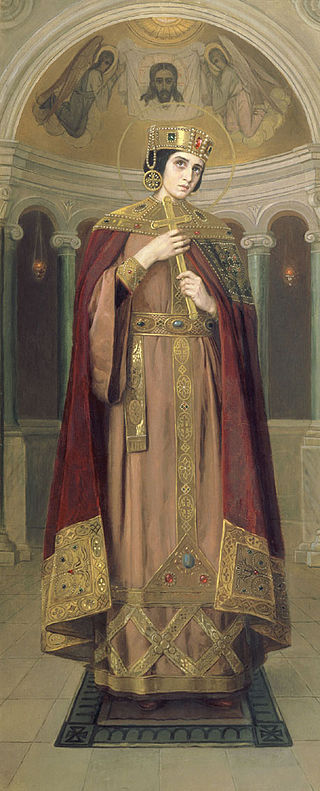
Alexandra of Rome was a reputed Christian martyr and saint, known from Martyrdom of Saint George as either Emperor Diocletian's wife or the wife of Dacian, a Roman Prefect. She is also sometimes mistaken with Priscilla or Prisca.
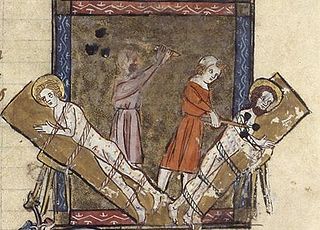
Gervasius and Protasius are venerated as Christian martyrs, probably of the 2nd century. They are the patron saints of Milan and of haymakers and are invoked for the discovery of thieves. Their feast day in the Latin Rite of the Catholic Church is 19 June, the day marking the translation of their relics. In the Eastern Orthodox Church and in the Eastern Rites of the Catholic Church, their feast takes place on 14 October (O.S.)/24 October (N.S.), the traditional day of their death. In Christian iconography their emblems are the scourge, the club and the sword.

The Four Crowned Martyrs or Four Holy Crowned Ones were nine individuals who are venerated as martyrs and saints of Early Christianity. The nine saints are divided into two groups:
- Severus, Severian(us), Carpophorus (Carpoforus), Victorinus
- Claudius, Castorius, Symphorian (Simpronian), Nicostratus, and Simplicius
Saint Gabinus is the title given to two personages.
Saint Alberta of Agen was a Roman venerated as a martyr and saint. Supposed to have been one of the first victims of Diocletian's persecutions, she was tortured with Saint Faith and Saint Caprasius in Agen, France. According to tradition, some spectators objected to this, and were subsequently beheaded as well. Alberta is commemorated on March 11.
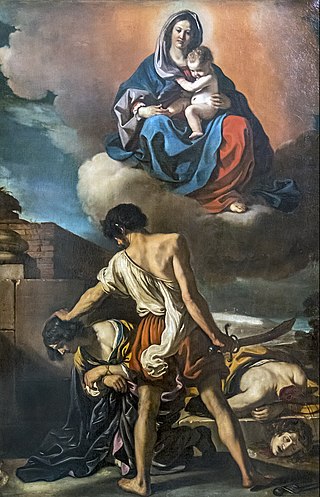
John and Paul are saints who lived during the fourth century in the Roman Empire. They were martyred at Rome on 26 June. The year of their martyrdom is uncertain according to their Acts; it occurred under Julian the Apostate (361–363).

Saints Protus and Hyacinth were Christian martyrs during the persecution of Emperor Valerian. Protus' name is sometimes spelled Protatius, Proteus, Prothus, Prote, and Proto. His name was corrupted in England as Saint Pratt. Hyacinth is sometimes called by his Latin name Hyacinthus.
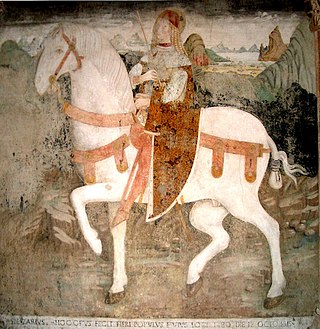
Nazarius and Celsus were two martyrs of whom little is known beyond the discovery of their bodies by Ambrose of Milan.
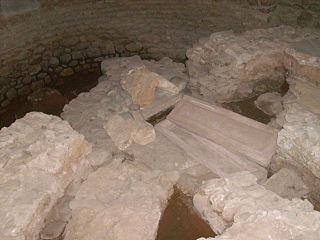
Caprasius, sometimes Caprasius of Lérins, was a hermit who lived in Lérins, Provence.

Saints Cyprian and Justina are honored in the Catholic Church, Eastern Orthodox Church and Oriental Orthodoxy as Christians of Antioch, who in 304, during the Diocletianic Persecution, suffered martyrdom at Nicomedia on September 26. According to Roman Catholic sources, no Bishop of Antioch bore the name of Cyprian.

Julian and Basilissa were husband and wife, and are venerated as saints in the Roman Catholic Church and the Eastern Orthodox Church. They were Christian martyrs who died at either Antioch or, more probably, at Antinoe, in the reign of Diocletian, early in the fourth century, on 6 January, according to the Roman Martyrology, or 8 January, according to the Greek Menaea.

Saints Cantius, Cantianus, and Cantianilla are venerated as saints and martyrs by the Christian church.
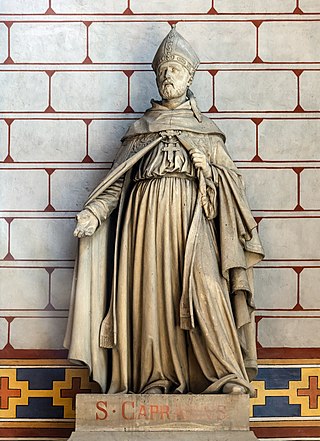
Saint Caprasius of Agen is venerated as a Christian martyr and saint of the fourth century. Relics associated with him were discovered at Agen in the fifth century. Local legends dating from the 14th century make him the first bishop of Agen, though, as Alban Butler writes, the only evidence to support his existence is the dedication of a church to him in the 6th century.

















